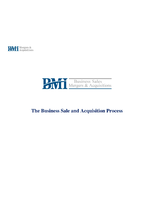Software generates predistortion curves.
Share:
Press Release Summary:
Model 89604A distortion test suite delivers processed (delay-corrected and amplitude normalized) signal files needed to program advanced curve fitters that control linearity of MCPAs. Test suite also graphically shows incremental signal degradation contributed by MCPA. Suite uses modulated real-world signals to measure AM/AM and AM/PM distortion with up to 36 MHz of measurement bandwidth. PC-based software provides complete, time-aligned stimulus/response data.
Original Press Release:
Agilent Technologies' Distortion Test Suite Helps Optimize Linearity of Multichannel Power Amplifiers
New Software Speeds the Process of Generating Accurate, Predistortion Curves for Linearizing Amplifier Output
PALO ALTO, Calif., Jan. 13, 2003 -- Agilent Technologies Inc. (NYSE: A) today introduced a software application for its spectrum analyzer families, which allows multichannel power amplifier (MCPA) designers to achieve the lowest possible distortion and highest linearity with the least amount of effort and complexity.
The Agilent 89604A distortion test suite can be used with Agilent ESA-E or PSA Series spectrum analyzers or 89600 Series vector signal analyzers. When used with a spectrum analyzer, the ESG or PSG Series digital signal generator, and a PC running any current Windows® operating system, the 89604A delivers the processed (delay-corrected and amplitude normalized) signal files designers need to program advanced curve fitters that control the linearity of MCPAs. The test suite also graphically shows the incremental signal degradation contributed by the MCPA, as well as many other characteristics useful for optimizing amplifier performance.
The test suite and its accompanying instruments use stimulus signals that are very similar to those the amplifier will experience in service, which is one of the most important factors for the solution's measurement accuracy. Traditional techniques use a single swept CW signal or multiple CW signals as a stimulus, which do not accurately imitate the complexity of today's broadband digital modulation schemes. As a result, amplifiers optimized using these stimulus signals can perform poorly. In contrast, the distortion test suite works with real-world signals provided by a base station, test signals produced by a signal generator, or even Additive White Gaussian Noise (AWGN). Thus, MCPAs characterized with the distortion test suite are much more likely to meet or exceed tight telecommunications industry standards.
This PC-based software also provides complete, time-aligned stimulus/response data, resampled to match user needs, for input to the predistortion curve fitter, which the designer would otherwise need to compile manually.
The 89604A distortion test suite uses complex modulated "real-world" signals to accurately measure AM/AM and AM/PM distortion with up to 36 MHz of measurement bandwidth (depending on the instruments used), ensuring that even subtle distortion mechanisms such as memory effects and component heating are stimulated and measured. The results are displayed together with an ideal performance line for reference and a curve fit to the results. This helps evaluate how far from ideal the MCPA moves as it approaches saturation, which occurs when the amplifier reaches beyond the highest input level it can withstand and still produce a clean signal.
The distortion test suite provides other useful information as well. The gain compression display scales the AM/AM gain curve to emphasize variations in gain, and the probability density function (PDF) curve lets the designer examine the stimulus and response signals to ensure that they have the expected distribution around their means. The complementary cumulative distribution function (CCDF) curves show how much headroom is available in the design. The distortion test suite can also show how error vector magnitude (EVM) contributed by the MCPA degrades the modulation of the signal. Finally, the distortion test suite provides a results display of the polynomial coefficients used by the AM/AM and AM/PM curve-fitting algorithm, which can then be used to set up the predistortion curve fitter.
Measurement setup is simple: Once a few connections are made, the user enters center frequency, measurement span, number of measurement channels, input range, and values of external attenuators, then presses start. The distortion test suite and instruments do the rest.
The 89604A distortion test suite can be used with any ESA-E or PSA Series spectrum analyzer or the 89600 Series VXI-based vector signal analyzer. Two-channel measurements can be made (greatly reducing measurement test) when the test suite is used with the PSA Series or 89600.
Additional information about the Agilent 89604A distortion test suite is available at www.agilent.com/find/distortionsuite.
Photos of all products mentioned in this press release are available at http://www.get.agilent.com/press/index.cgi?PSP_NEXT=ShowPR&Release:release_id=233.
U.S. Pricing and Availability
The Agilent 89604A distortion test suite is available now for approximately $2,000.
About Agilent Technologies
Agilent Technologies Inc. (NYSE: A) is a global technology leader in communications, electronics and life sciences. The company's 36,000 employees serve customers in more than 110 countries. Agilent had net revenue of $6 billion in fiscal year 2002. Information about Agilent is available on the Web at www.agilent.com.
Windows and MS Windows are U.S. registered trademarks of Microsoft Corporation.
Information in this news release applies specifically to products available in the United States. Product availability and specifications may vary in other markets.
Further technology, corporate citizenship and executive news are available on the Agilent news site at www.agilent.com/go/news.
BACKGROUNDER
The Importance of Using "Real-World" Signals When Evaluating Multichannel Base Station Power Amplifiers
The digital modulation schemes employed in TDMA, CDMA, and now W-CDMA services require an entirely new set of tests as compared to analog FM transmission. One of the most critical tests is measuring the linearity of modern amplifiers employed in the latest base stations.
Unlike their predecessors, these amplifiers -- multichannel power amplifiers or MCPAs -- now pass multiple signals simultaneously, rather than handling a single carrier at a time. This makes it absolutely essential that none of the content from one signal leaks into the area occupied by neighboring signals. Amplifier distortion must be maintained at extremely low levels, which requires the amplifiers to operate linearly and employ one of two popular techniques (feedforward cancellation or predistortion) to ensure this linearity is maintained.
MCPAs dramatically reduce the number of power combiners and filters that are required when many more single-channel amplifiers are used. The amplifiers also require no guard band, so duplexers may no longer be needed. They allow dynamic channel allocation and more efficient use of spectrum resources, handle both wideband and narrowband modulation formats, and make it much easier to add more carriers, a characteristic that eases the transition from 2G to 3G systems.
To keep MCPAs linear, the feedforward cancellation technique was first employed. This technique samples the amplifier's output signal (which contains distortion products) and compares it with the signal at the input of the amplifier. The difference between the two signals, which contains the undesired spurious products, is amplified and subtracted from the desired carrier signal, which produces signal conditions in which the spurious levels are much lower than the desired signal. While this technique is effective, it is not terribly efficient, and gets more difficult to implement as bandwidth increases.
In the other technique, called predistortion, a signal is sent through a predistortion circuit (a complex gain adjuster) before it reaches the amplifier. This circuit distorts the signal with the inverse of the distortion characteristics of the amplifier. Once the signal is sent through the amplifier, these characteristics cancel out, leaving an undistorted signal. This technique is generally more efficient, and provides the best linearization performance, but is expensive because it measures signal characteristics and compensates for those characteristics in real time. However, it is growing in popularity as signal bandwidths increase.
Obviously, this type of linearization technique requires data that defines the distortion characteristics of the amplifier as closely as possible, so that the predistortion circuit can be precisely "curve fit." To gather this information, a stimulus signal must be used, preferably one with characteristics similar (or identical) to those that the amplifier will see in service. CW tones have been used for this, which require multiple sources and are better suited to narrowband signals. Additive White Gaussian Noise (AWGN), which has "random" magnitude characteristics and bandwidth closer to those of digital signals, was used in the tests of early digital base station amplifiers. However, neither of these sources has characteristics that are exactly the same as those of today's complex digital modulation schemes. Hence, using these signals as stimuli for testing MCPAs can produce results that do not accurately depict how the amplifier will perform when "real-world" signals are input. Distortion can then occur, which leaks into adjacent channels, degrading their performance.
The Agilent 89604A Distortion Test Suite relies on signals that can come from an operating base station or from signals generated by digital signal generators that can precisely mimic the signal environment in which the MCPA will operate. When these signals are used to stimulate the MCPA under test, the results are more indicative of the amplifier's true characteristics. The data can then be sent to the advanced curve fitters used by the predistortion circuitry to speed the process of optimizing MCPA linearity.
The technique also produces additional useful information, including time-aligned, corrected data, which would otherwise have to be compiled by the person doing the test.




